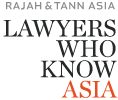The Protection From Harassment Bill was passed by Parliament on 13 March 2014. The legislation seeks to enhance the protection of persons against harassment and anti-social behaviour such as cyber bullying and unlawful stalking, by providing a range of self-help and civil remedies as well as imposing criminal liability on perpetrators who engage in such behaviour.
Most of the offences relating to harassment and anti-social behaviour are currently covered by the Miscellaneous Offences (Public Order and Nuisance) Act (Cap 184) ("MOA"). When enacted, the new Protection From Harassment Act ("Act") will extend these offences as well as introduce a new one, unlawful stalking, under a consolidated legislation. With this, the corresponding offences in the MOA will be repealed, and the common law tort of harassment will be abolished. The intention of this is so that no civil proceedings will be brought for harassment except under the new Act when it is passed.
The offences and penalties under the Act are covered in sections 3 to 10. Apart from the criminal sanctions, various civil remedies are provided for in sections 11 to 13 of the Act.
For an overview of the structure of the Protection From Harrassment Bill, please refer to our Firm's update.
Section 33 of the Income Tax Act ("Act") contains a general anti-avoidance rule ("GAAR") which enables the Comptroller of Income Tax to disregard the legal form of transactions in certain circumstances to counteract any impermissible tax advantage obtained by a taxpayer. The construction and application of the GAAR, as well as the ambit of the Comptroller’s power to counteract the tax advantage, was considered in the recent Court of Appeal decision of Comptroller of Income Tax v AQQ and another appeal [2014] SGCA 15. This is a landmark decision as it marks the first time that the GAAR is considered by the highest court since its enactment in its current form 26 years ago.
Briefly, the Court of Appeal held that the GAAR should be applied as follows:
(a) the Court will first consider whether a transactional arrangement prima facie falls within the threshold limbs of section 33(1) of the Act such that the taxpayer has derived a tax advantage, i.e. whether the purpose or effect of the arrangement is to alter the incidence of tax, relieve a liability to pay tax, or reduce or avoid any liability imposed or would have otherwise been imposed;
(b) if any of the threshold limbs of section 33(1) of the Act is satisfied, the Court will then consider whether the statutory exception in s33(3)(b) applies; and
(c) if the statutory exception in section 33(3)(b) of the Act does not apply, the Court would ascertain whether the tax advantage was legitimate, in that it arose from a specific provision in the Act, the use of that specific provision was within Parliament’s intended scope and the legal form and resulting tax effect of such use was within the contemplation and purpose of Parliament.
Please click here to refer to our Firm's update on this Court of Appeal decision.
"Reasonable endeavours" or "best endeavours" clauses have become an increasingly common feature of contracts in Singapore. However, such "endeavours" clauses are far from certain, and questions remain as to what exactly parties are required to do under these provisions. In KS Energy Services Ltd v BR Energy (M) Sdn Bhd [2014] SGCA 16, the Singapore Court of Appeal had the opportunity to clarify the content of "endeavours" clauses.
The case involved a provision which required the Appellant to use "all reasonable endeavours" to procure an oil rig by a certain date. Although the Appellant failed to procure the oil rig in time, the Court held that the "all reasonable endeavours" clause had not been breached, as the Appellant had in fact taken all reasonable steps that could be expected of it in getting the third party to complete construction of the oil rig.
Importantly, in reaching this decision, the Court of Appeal examined the existing case law on the topic and laid out the applicable test for determining whether an "endeavours" clause has been fulfilled, as well as the guidelines and principles that parties should observe when working under an “endeavours” clause.
Our Firm's summary of the case can be accessed at the link here.
The Singapore Exchange Limited ("SGX") has enhanced its regulatory regime for the maintenance of orderly, fair and transparent trading in its securities markets. The changes, which are targeted at heightening SGX's surveillance of trading activities, took effect on 3 March 2014. They comprise the following measures:
-
SGX will enhance its public query process by providing guidance and examples of what could be the possible causes of unusual trading activity and the company’s response will now need to be approved by the company’s board of directors;
-
SGX will issue a “Trade with Caution” announcement when companies are unable to sufficiently explain the unusual trading activity; and
-
A new requirement for companies to notify SGX of discussions or negotiations which are likely to lead to a takeover, reverse takeover or very substantial acquisition and to also maintain a list of persons privy to such transaction.
These measures are applicable to both Mainboard and Catalist listed securities. Companies which have securities listed on the SGX should take note of these developments, especially in relation to responses and notifications which they need to make to SGX.
For a summary of what these measures entail as well as some preliminary observations on their effect, please refer to the update here.

